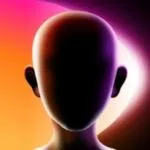Top AI Art Generator Software
AI art generator software uses machine learning to turn text prompts into stunning visual artwork. These tools are powered by advanced models like DALL·E, Midjourney, and Stable Diffusion, enabling users to create unique digital art in seconds. From fantasy scenes to hyper-realistic portraits, AI art generators cater to graphic designers, marketers, NFT creators, and hobbyists alike. Most platforms offer customizable styles, resolution options, and commercial licenses. Whether you’re designing social media posts or concept art, top AI art generators allow anyone to unleash their creativity—without needing advanced drawing skills or expensive design software.
List of the Best Top AI Art Generator Tool

Wondershare Virbo (Wondershare)
-
Features
- Natural Language Processing
- Content Generation
- Personalization and RecommendIion
-
Category Type
AI Art Generator Software
-
Price
Starting $20 Per Month

Canva (Canva Pty Ltd)
-
Features
- Pattern, Color & Art Storage
- Content Library
- Collaboration Tools
- Design Management
- Custom Fonts
-
Category Type
AI Art Generator Software
-
Price
$15.00 month
1.What is AI Art Generator Software?
Definition & Purpose:
AI art generator software transforms text descriptions or reference images into original artwork using deep learning models. It relies on Generative Adversarial Networks (GANs) or diffusion models trained on vast image datasets.
How It Works:
You enter a prompt like “a futuristic city at sunset,” and the tool generates a visual based on your input. Many platforms also let you tweak the style, size, and detailing.
Use Cases:
Social media content
NFT art creation
Graphic design
Game concept art
Personalized prints
AI art generator software is a digital tool powered by artificial intelligence that creates original images based on user input—typically text prompts or reference images. These tools leverage advanced algorithms like Generative Adversarial Networks (GANs) or Diffusion Models to interpret and visualize content in various artistic styles.
For example, if you input “a cyberpunk cat riding a motorcycle at night,” the software generates a unique image that matches that description.
⚙️ How Does It Work?
AI art generators are trained on massive datasets of images and their textual descriptions. When a user provides a prompt, the model:
Analyzes the semantic meaning of the input
Matches it with relevant visual patterns from its training data
Generates a new image based on this learned knowledge
Some platforms allow:
Image-to-image generation (enhancing or reinterpreting an uploaded photo)
Style transfers (applying one image’s style to another)
Inpainting/outpainting (filling in missing parts or expanding images)
🧑🎨 Key Applications and Use Cases
AI art generators are used across industries and by individuals for a variety of purposes, including:
Graphic Design: Quick visual mockups, illustrations, or concept art
Marketing: Creative ad visuals, social media content, banner art
Entertainment: Game assets, background art, storyboards
NFTs: Unique collectible art pieces and generative NFT collections
Education: Visual storytelling, concept visualization, art learning tools
Personal Projects: Prints, gifts, creative hobbies
🖌️ Styles and Flexibility
Modern AI art generators support a wide range of artistic styles, such as:
Photorealism
Anime
Surrealism
Oil painting
3D render style
Abstract and modern art
You can often customize the final result with options like:
Color palettes
Lighting effects
Aspect ratios
Levels of detail
📱 Accessibility and Platforms
AI art generator software is available through:
Web-based platforms (e.g., NightCafe, Fotor, Canva AI)
Mobile apps (e.g., Wonder AI, StarryAI)
APIs and local installs (e.g., Stable Diffusion for developers and power users)
Many platforms offer free versions with limited features and premium plans for high-res downloads, faster rendering, or commercial use.
✅ Summary
AI art generator software uses artificial intelligence to turn ideas into visuals, unlocking creativity for users of all skill levels. It’s fast, scalable, and increasingly sophisticated—reshaping how we imagine and create digital art in the modern world.
2.What Features Should I Look for in a Top AI Art Generator?
1. Prompt Accuracy:
Look for software that accurately interprets and visualizes text prompts, even complex or abstract ones.
2. Style Variety:
Top tools offer diverse art styles—from anime and realism to watercolor and cyberpunk.
3. Resolution & Export Options:
Ensure high-resolution outputs with support for common file formats (PNG, JPG, etc.).
4. Speed & Usability:
Fast generation time, clean interface, and mobile/web access make the tool efficient for creators.
5. Licensing Options:
Check whether the platform allows commercial use of the generated images.
Choosing the right AI art generator depends on your creative needs and usage goals. Below are the most important features to consider when selecting top-tier AI art software:
🧠 1. Prompt Interpretation & Creativity
A good AI art tool should accurately understand your input prompts and produce relevant, creative visuals. The best generators:
Understand detailed or abstract descriptions
Offer creative interpretations, not just literal results
Handle complex combinations like “a medieval robot in watercolor style”
Why it matters: You get art that aligns with your vision, without requiring edits or retries.
🎨 2. Style Variety and Customization
Top tools let you choose or blend from a wide range of art styles, including:
Realism
Watercolor
Anime
Pixel art
Surrealism
3D render
Some even allow style transfer, where you apply one image’s style to another.
Bonus feature: Custom style uploads or training your own model for a unique look.
🖼️ 3. Image Resolution and Quality
High-resolution output is critical, especially for:
Printing artwork
Designing product packaging
Creating professional marketing visuals
Check if the tool allows HD or 4K exports, scalable image dimensions, and clear detailing even in complex prompts.
🧰 4. Editing and Control Tools
Advanced platforms give you creative control over:
Color palettes
Lighting and shading
Aspect ratios (e.g., square, portrait, widescreen)
Inpainting/outpainting (editing or expanding parts of the image)
Negative prompts (to avoid unwanted elements)
Why it matters: You’re not stuck with just one random output—you can refine or iterate.
🔐 5. Commercial License and Ownership
If you’re planning to monetize your artwork (e.g., for NFTs, posters, ads), make sure the platform provides commercial usage rights. Look for:
Clear licensing terms
Royalty-free usage
Option to own or retain rights to generated images
Pro tip: Avoid tools with unclear or restrictive copyright terms for professional work.
🔗 6. User Interface & Export Options
A well-designed UI should make it easy to:
Enter prompts
Preview results
Download in various file formats (PNG, JPG, PSD, etc.)
Save or organize projects in galleries
Helpful extras: Watermark-free downloads, batch export, and social media sharing.
🤖 7. AI Model Options (Optional but Powerful)
Some platforms (like Playground AI or NightCafe) let users choose the AI engine, such as:
DALL·E
Stable Diffusion
CLIP-Guided Diffusion
Each model has its own strengths—flexibility gives you more creative control.
✅ Summary
When choosing an AI art generator, prioritize tools that offer prompt accuracy, diverse styles, high-res output, editing options, and commercial usage rights. The right features empower you to produce stunning, usable artwork that reflects your vision—effortlessly.
3.Who Can Benefit from AI Art Generator Tools?
1. Designers & Illustrators:
Quickly brainstorm visuals or mockups without starting from scratch.
2. Content Creators & Marketers:
Generate engaging thumbnails, ads, or visuals tailored to specific themes or trends.
3. NFT Artists & Developers:
Create unique and scalable digital art collections for blockchain-based projects.
4. Educators & Students:
Visualize abstract concepts or enhance creative learning in the classroom.
5. Hobbyists & Art Enthusiasts:
Enjoy a new medium of artistic expression without traditional drawing skills.
AI art generators are not just for artists. These tools have broad applications across industries, professions, and even personal use. Here’s a breakdown of who can benefit and how:
🎨 1. Graphic Designers and Visual Artists
AI tools can help designers:
Rapidly generate visual concepts or mockups
Overcome creative blocks
Create variations of a design with minimal effort
Save time on drafts and revisions
Why it matters: Designers can combine AI output with manual editing in tools like Photoshop or Illustrator to accelerate creative workflows.
📢 2. Marketers and Content Creators
Marketers can use AI-generated visuals for:
Social media posts and ads
Blog illustrations
YouTube thumbnails
Email banners and landing pages
Why it matters: Eye-catching, customized visuals increase engagement—and AI helps produce them without hiring a design team.
🎮 3. Game Developers and Storytellers
For game developers and writers, AI art generators provide:
Concept art for characters, environments, and objects
Visual inspiration for world-building
Cost-effective prototyping assets
Why it matters: These tools offer fast, inexpensive ways to visualize creative ideas, especially for indie creators or small studios.
🖼️ 4. NFT Artists and Digital Entrepreneurs
NFT creators use AI tools to:
Generate unique, collectible artwork
Create large-scale NFT collections (10k projects)
Add visual flair to blockchain-based projects
Why it matters: AI helps scale creativity and reduce the time and cost of manual art production for digital assets.
📚 5. Educators, Students & Hobbyists
Teachers and students use AI art to:
Visualize abstract concepts
Create educational illustrations
Enhance presentations and learning content
Hobbyists and casual users enjoy:Exploring creativity without technical skills
Generating personal art, memes, or gifts
Creating avatars, posters, and visual stories
Why it matters: AI art is a fun, accessible entry point into digital creativity for all skill levels.
✅ Summary
AI art generators benefit a wide range of users—from professionals seeking faster workflows to hobbyists exploring creative expression. Whether you’re in design, marketing, gaming, education, or just looking to have fun with art, these tools offer immense value and potential.
4.Are AI Art Generators Legal and Safe to Use?
Yes, but with conditions.
Most AI art tools offer terms of service outlining acceptable use and copyright rights. Always verify:
Ownership rights: Do you own the generated image?
Commercial usage: Is it allowed in ads, products, or NFTs?
Prompt restrictions: Some tools restrict NSFW or harmful content.
Pro Tip:
Use platforms that clearly state license rights and support ethical AI training datasets.
While AI art generators are powerful tools, using them comes with important legal and ethical considerations. It’s essential to understand how to use them responsibly, legally, and safely.
🔐 1. Ownership and Copyright Rights
One of the most common questions is: “Do I own the AI-generated artwork?”
The answer depends on the platform:
Some platforms grant full ownership of generated content once created (especially under paid or premium plans).
Others may retain partial rights or restrict commercial usage, especially under free tiers.
Always read the licensing agreement. Look for terms like:
“Royalty-free usage”
“Full commercial license”
“No resale without consent”
💼 2. Commercial Use and Licensing
If you’re planning to use AI-generated images for:
Selling products (posters, t-shirts, NFTs)
Marketing or advertising
Branding or social media
…you must ensure the platform allows commercial use. Many reputable tools like Midjourney, DALL·E (with subscription), and NightCafe offer such licenses, but usage rights may vary between free and paid versions.
🚫 3. Prompt Restrictions and Content Guidelines
Top platforms use content moderation to prevent:
NSFW or explicit content
Harmful, violent, or illegal imagery
Use of copyrighted characters, celebrities, or brands
Trying to bypass these filters could lead to:
Account suspension
Legal action
Content removal
Stay ethical by avoiding prompts that mimic copyrighted or trademarked material.
📚 4. AI Model Training and Ethical Concerns
Some controversies surround how AI models are trained—especially if they use publicly available artworks without artists’ consent.
While this isn’t illegal for end users, it raises ethical concerns in the creative community. If you want to support responsible AI use:
Choose platforms that transparently disclose their training datasets
Opt for tools that allow you to train your own model or upload licensed content
🛡️ 5. Platform Security and Data Privacy
When using AI art tools, especially cloud-based ones:
Ensure the website uses HTTPS (secure)
Check if your prompts or generated images are stored or made public
Avoid uploading personal or sensitive data as reference images
Why it matters: You want your creative work and personal data to remain safe and private.
✅ Summary
Yes, AI art generators are legal and safe to use—if you choose trustworthy platforms and respect licensing terms. Understanding usage rights, prompt restrictions, and ethical concerns ensures that you can create, share, and sell AI art with confidence and integrity.



